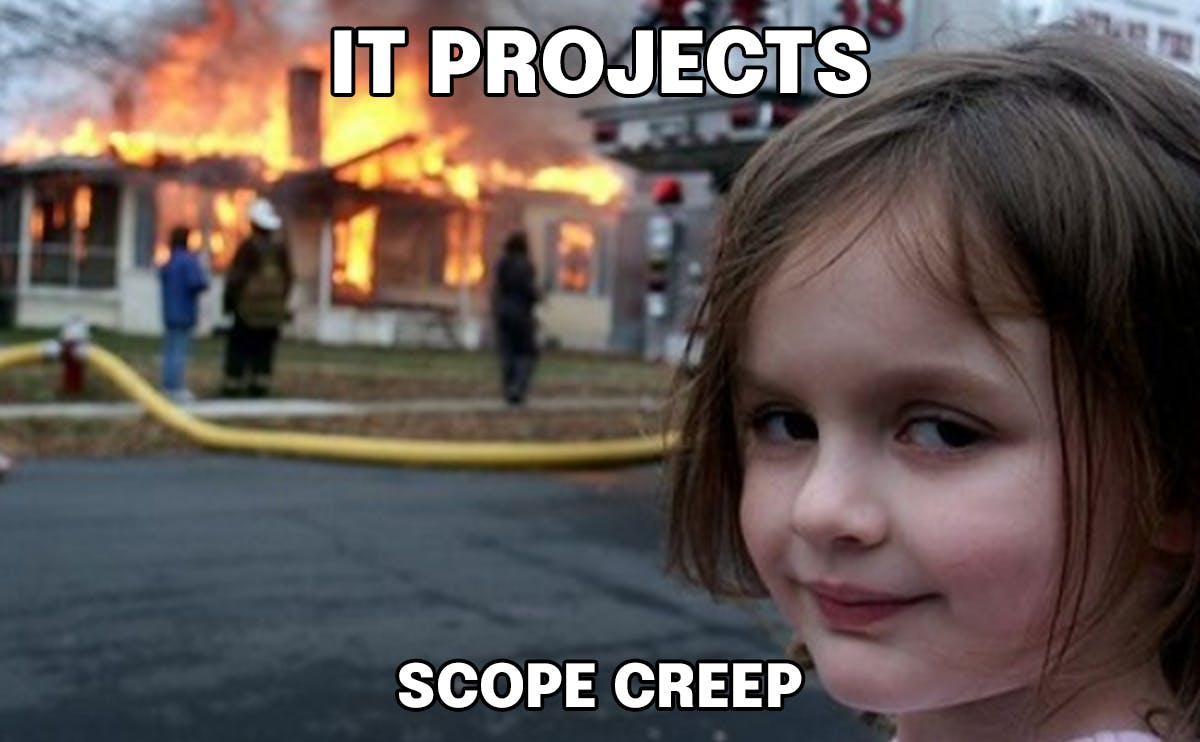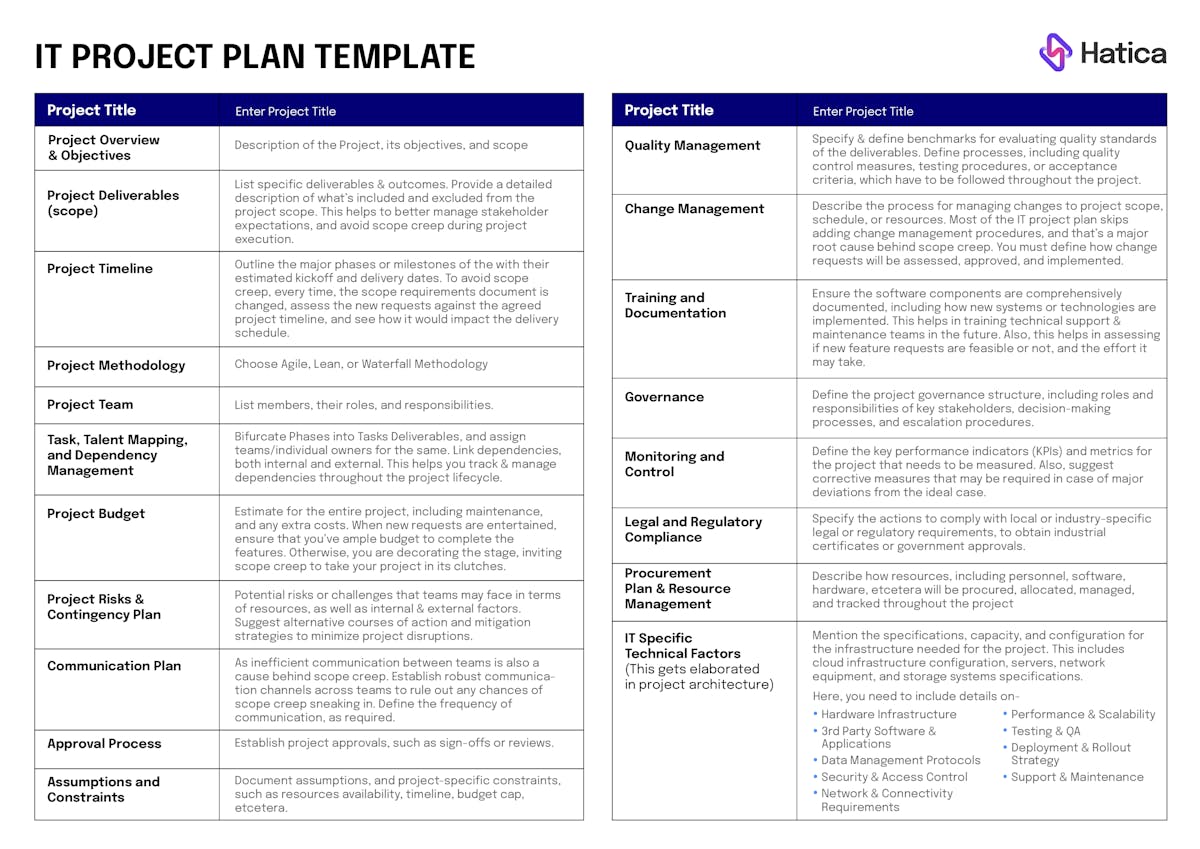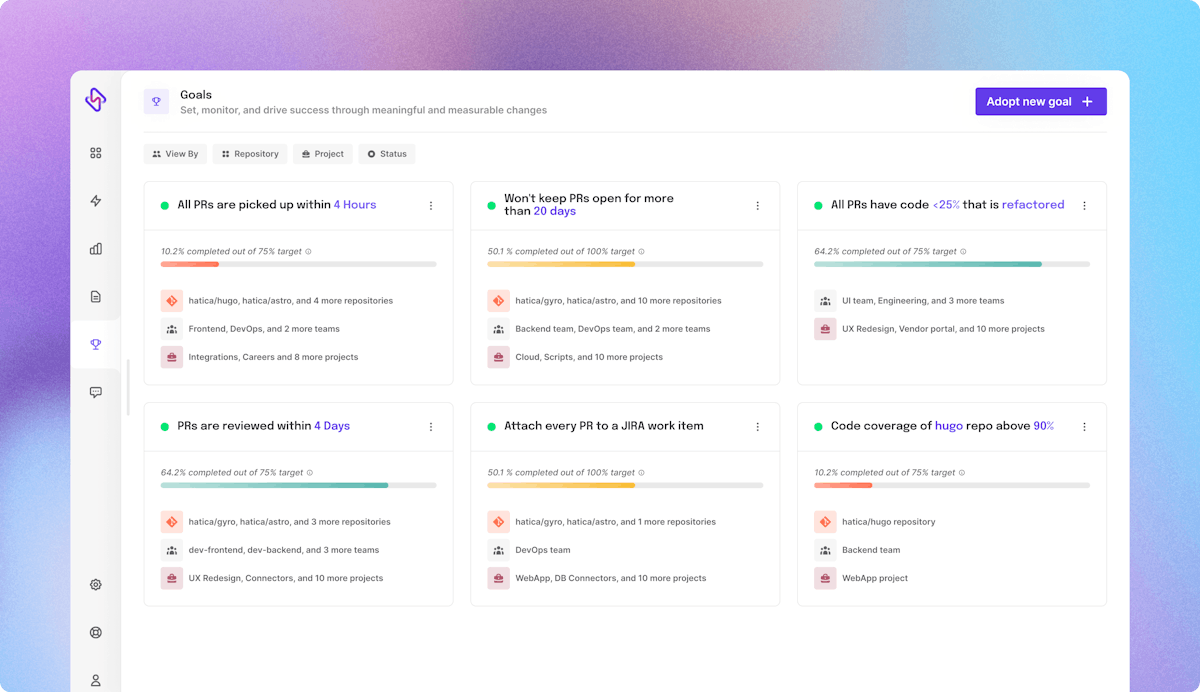If this itself wasn’t enough of a turmoil, you also have to juggle and balance the triumvirate of project quality, schedule time, and project cost.
This encroaching change in the scope of the project is what’s called ‘Scope Creep’.
How Stakeholders Sow the Seeds of Scope Creep?
In the realm of IT projects, scope creep emanates from multiple roots, sabotaging the best-laid plans and jeopardizing the project's fate.
Engineering managers, tech leads, or project managers, must identify & address the underlying factors to fortify the project against scope creep. The root causes of scope creep could be multiple, including—
- Communication breakdowns within the project team
- Unrealistic ambitions in terms of quality, resources, and timelines
- Too many decision makers (stakeholder overload)
- Ineffective change control processes
- Influence of last-minute customer feedback
For example, change of leadership at the top can radically change the nature and scope of projects at the bottom level. It is possible that the preceding leader was more inclined towards being at the frontier of innovation, while the new one is more inclined to set up processes to have a firm foot in the market.
And so, a lot of projects that were initiated under the last leader, may either get dropped or see significant changes in scope under the new one. This may trigger a domino effect on the dependent projects within the organization. Creating complete chaos.
Leadership shuffling is just one example. Probably, the least harmful. Here are some perilous causes (with examples) of scope creep:
Absence of Project Scope
Assume that an org embarks on developing a mobile application to better serve their customers. Initially, the project objective is to create a basic mobile app with quintessential functionality.
However, due to inadequate requirements gathering, limited clarity on user expectations, and missing end-goal alignment, stakeholders inject new features and functionality requests throughout the development cycle.
Due to a lack of structure and direction, these new features are often not coherent. As a result, the project scope expands, timelines get extended, and resources are strained, ultimately leading to scope creep and potential budget overruns.
Unclear Objectives
Consider that a digital transformation leader aimed to integrate multiple existing software systems into a unified platform for improving efficiency. However, s/he didn’t clearly define goals and objectives for integration, data synchronization, and user workflows.
As the project progressed, stakeholders requested additional system integrations, custom data mappings, and complex workflow configurations, often without considering the time and effort required. This lack of clarity paves the way for scope creep to slip in and do what it does — derail the project from its purpose.
Gold Plating
Gold plating in IT projects is when teams voluntarily increase project specifications, without getting such plans approved by the top leadership. Consider it as a warm invitation to the scope creep. Gold plating scope creep consumes time and resources without much positive impact on CX.
Teams and individuals often engage in gold plating to win brownie points by impressing the leadership, enhancing user experience, or diverting defects. However, it can backfire.
It often causes unauthorized changes in scope requirements, which may even lead to project rejection/closure. Of course, Gold plating scope creep raises costs, risks, and stakeholder expectations too.
Examples of Scope Creep
Scope creep can subtly derail your engineering project. Be it small-size engineering teams that have just started out with projects, or established organizations like the Denver International Airport, high-scope creep can give your team enough project management horrors for a lifetime.
The launch of the ambitious Obamacare project, the Healthcare.gov website dealt with scope skyrocketing as soon as the design prototype was passed and approved.
During development, even as late as the week of the project launch, a new feature was added for a project, and for engineering managers to brainstorm, and update. The decision came from the top tier and had to be executed in the next 5 days.
The result? Technical glitches, long loading times, and difficulties in user registration.
IT Project Plan Template to Prevent Scope Creep
Rope the beast, and safeguard your IT project from the creeping chaos. Else, your project may teeter.
Besides, you might not prefer to juggle with dev, testing, and production code on a festive Sunday evening, but rather indulge in a blissful revelry, with neon lights adorning the open rooftop nightclub.
And for that, you need an IT project plan template that’s equipped to keep you free from the freaky claws of scope creep. Keep in mind that project plans can vary depending on the specific requirements and nature of the project.
Here's a basic IT project plan template for agile teams, that you can use as a starting point. Feel free to customize it to fit your needs.









